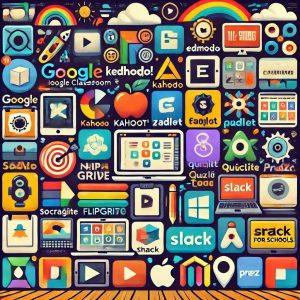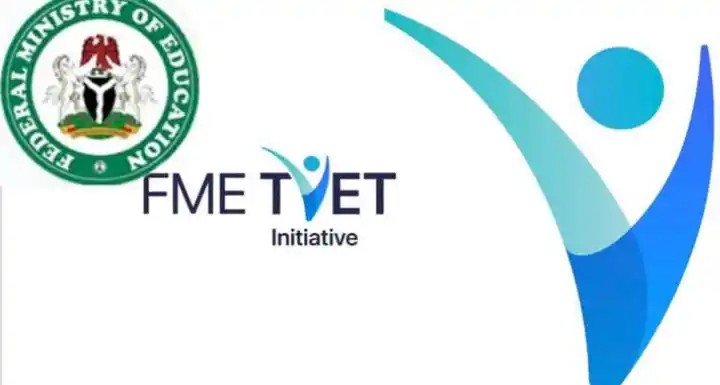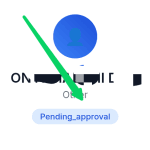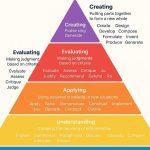
Best Digital Tools for Educators: The Ultimate Guide to Enhancing Learning Experience
In today’s fast-paced educational environment, digital tools for educators have become essential for enhancing the learning experience. These tools not only simplify teaching but also make learning more engaging for students. From managing classrooms to personalizing lessons, the right digital tools can significantly impact how educators connect with their students. In this article, we’ll explore the best and free digital tools for educators, focusing on how they can be effectively integrated into the classroom.
Why Digital Tools Are Needed in Online Learning Environments
The shift to online learning has highlighted the need for digital tools in education. As more schools and universities adopt remote learning, educators are finding it challenging to engage students without face-to-face interaction. Digital tools help bridge this gap by offering platforms for communication, collaboration, and interactive learning.
For example, tools like Zoom and Google Classroom allow teachers to conduct virtual classes, share resources, and communicate with students in real-time. This level of connectivity is crucial in online learning environments, where maintaining student engagement can be difficult. According to a study by the EdTech Review, 77% of educators believe that digital tools improve student engagement and participation in online classes Source edtech review
Moreover, digital tools provide educators with valuable data on student performance, allowing for more personalized and targeted teaching. This adaptability is particularly important in online learning environments, where students may struggle with self-motivation and time management. By using digital tools, educators can create a more structured and supportive learning environment, even from a distance.
Best Digital Tools for Educators in 2024
In this section, we’ll discuss some of the top digital tools for educators that are not only effective but also accessible to everyone.

1. Google Classroom
Google Classroom is a free platform that allows educators to manage coursework, communicate with students, and organize assignments seamlessly. It integrates with other Google tools like Google Docs, Sheets, and Drive, making it easy for teachers to share resources and collaborate with students.
Example: Imagine you’re teaching a history class and want to assign a research project. With Google Classroom, you can create an assignment, attach necessary resources, and set a due date. Students can then submit their work directly through the platform, and you can provide feedback within the same space. This streamlined process saves time and ensures that all course materials are in one place.
2. Kahoot!
Kahoot! is a game-based learning platform that turns quizzes and tests into fun, interactive games. It’s an excellent tool for reviewing material before exams or engaging students in learning new concepts. The platform is free to use, with additional paid features available.
Example: If you’re preparing your students for a math test, you can create a Kahoot! quiz with multiple-choice questions related to the topics covered. As students answer questions, they earn points, adding a competitive element to the review session. This not only makes learning fun but also helps reinforce the material in a memorable way.
3. Microsoft Teams for Education
Microsoft Teams for Education is a comprehensive platform that supports communication, collaboration, and organization in the classroom. It’s particularly useful for remote and hybrid learning environments, as it integrates video conferencing, file sharing, and project management tools in one place.
Example: During the pandemic, many schools transitioned to online learning using Microsoft Teams. Teachers were able to conduct live classes, share lesson plans, and collaborate with students on group projects. This all-in-one platform simplified the transition to remote learning and ensured that students continued to receive a high-quality education.
4. Seesaw
Seesaw is a student-driven digital portfolio tool that allows students to document their learning journey and share it with teachers and parents. It’s especially popular in elementary schools, where students can showcase their work through photos, videos, and drawings.
Example: In an art class, students can use Seesaw to take pictures of their artwork and upload them to their digital portfolios. Teachers can then provide feedback directly on the platform, and parents can see their child’s progress in real-time. This ongoing documentation of learning helps create a more connected and supportive educational experience.
5. Zoom for Education
Zoom has become a household name in online learning. It’s a powerful video conferencing tool that allows educators to conduct live classes, hold virtual office hours, and host meetings with parents. The platform offers free and paid versions, with the free version being sufficient for most educational needs.
Example: Imagine teaching a literature class where you want to discuss a novel in-depth with your students. Using Zoom, you can host a virtual book club where students can share their thoughts and analyses. The breakout rooms feature allows you to divide students into smaller groups for more focused discussions, making the learning experience more interactive.
Free Digital Tools for Educators
While there are many paid digital tools available, some of the best options are free and accessible to all educators.
1. Edmodo
Edmodo is a free learning management system (LMS) that connects teachers, students, and parents. It offers a platform for sharing resources, assigning homework, and communicating with students. Edmodo is user-friendly and has a community aspect that allows teachers to collaborate and share ideas.
Example: A middle school science teacher can use Edmodo to post daily assignments, share interesting articles, and create discussion boards where students can ask questions or share their thoughts on the material. This keeps the class connected and engaged, even outside of school hours.
2. Canva for Education
Canva for Education offers free design tools that educators can use to create visually appealing presentations, infographics, and worksheets. It’s a valuable resource for teachers who want to make their lessons more engaging and accessible.
Example: A history teacher could use Canva to create an infographic that visually explains the causes and effects of World War I. This visual representation can help students better understand complex historical events, making the learning experience more impactful.
3. Quizlet
Quizlet is a free tool that allows students to create and study from digital flashcards. It’s particularly useful for subjects that require memorization, such as vocabulary, foreign languages, and scientific terms.
Example: An English teacher could create a set of Quizlet flashcards with vocabulary words from a novel the class is reading. Students can then use the flashcards to study the words at their own pace, reinforcing their understanding of the text.
What Is the Best Educational Tool?
Choosing the best educational tool depends on your specific teaching needs and goals. However, if we had to pick one, Google Classroom stands out for its versatility, ease of use, and integration with other Google apps. It’s a free tool that can be used in various educational settings, from elementary schools to universities.
Google Classroom allows teachers to create and organize assignments, provide feedback, and communicate with students and parents—all in one platform. Its user-friendly interface and widespread adoption make it a go-to tool for educators worldwide. Additionally, Google Classroom’s ability to integrate with other educational apps like Khan Academy, Edpuzzle, and Pear Deck further enhances its functionality, making it a comprehensive solution for modern educators.
Challenges and Solutions in Implementing Digital Tools
While digital tools offer numerous benefits, they also come with challenges that educators must address.
1. Overcoming the Digital Divide
One of the biggest challenges in implementing digital tools is the digital divide—inequality in access to technology. Not all students have reliable internet access or devices at home, which can hinder their ability to participate in online learning.
Solution: Schools and educators can work to provide equitable access to digital tools by offering loaner devices, creating offline versions of online materials, and providing resources for students who need them. Partnering with local businesses and organizations can also help bridge the gap by securing funding or donations for necessary technology.
2. Addressing Privacy and Security Concerns
With the increased use of digital tools comes the need for heightened privacy and security measures. Educators must ensure that student data is protected and that the tools they use comply with regulations like FERPA and COPPA.
Solution: Educators should choose tools with strong privacy policies and security features. It’s also essential to educate students about online safety and digital citizenship, teaching them how to protect their personal information while using digital tools.
3. Managing Screen Time and Digital Fatigue
Prolonged use of digital tools can lead to screen time overload and digital fatigue, especially in younger students. This can result in decreased focus, eye strain, and a lack of physical activity.
Solution: Educators can combat digital fatigue by incorporating regular breaks, encouraging physical movement, and balancing screen-based activities with hands-on learning. Using digital tools that offer offline activities or promoting a hybrid approach to learning can also help reduce screen time.
Future Trends in Educational Technology
As technology continues to evolve, so too will the digital tools available to educators. Here are some trends to watch for in the coming years:
1. AI and Machine Learning in Education
Artificial intelligence (AI) and machine learning are poised to revolutionize education by offering personalized learning experiences. These technologies can analyze student data to tailor lessons, recommend resources, and even provide real-time feedback.
Example: Imagine a math app that uses AI to identify a student’s weak areas and automatically generates practice problems targeting those skills. This personalized approach can help students overcome learning obstacles and achieve their academic goals more efficiently.
2. Virtual Reality (VR) and Augmented Reality (AR) in the Classroom
VR and AR are emerging as powerful tools for immersive learning experiences. These technologies can transport students to historical events, allow them to explore scientific concepts in 3D, and provide hands-on practice in virtual environments.
Example: A biology teacher could use AR to create an interactive lesson on the human body, allowing students to explore different organs and systems in 3D. This type of immersive learning can make complex concepts more understandable and engaging.
3. The Rise of EdTech Startups
The demand for innovative educational tools has led to a surge in EdTech startups, offering everything from AI-driven tutoring platforms to collaborative online whiteboards. These startups are pushing the boundaries of what’s possible in education, making learning more accessible, interactive, and personalized.
Example: Companies like Duolingo have redefined language learning by offering free, gamified lessons that are accessible to anyone with a smartphone. As more startups enter the market, we can expect to see even more creative solutions to the challenges facing education today.
FAQs About Digital Tools for Educators
1. What are digital tools for educators?
Digital tools for educators are software, apps, and online platforms that help teachers manage their classrooms, create and share educational content, communicate with students, and track student progress. Examples include Google Classroom, Kahoot!, and Microsoft Teams.
2. How can digital tools improve student engagement?
Digital tools can enhance student engagement by making learning interactive, fun, and personalized. For example, Kahoot! turns quizzes into games, while Google Classroom allows students to collaborate on projects in real-time. These tools help maintain student interest and participation, even in remote learning environments.
3. What is the best digital tool for remote learning?
Google Classroom is widely regarded as one of the best digital tools for remote learning due to its versatility, ease of use, and integration with other educational apps. It allows teachers to create and organize assignments, communicate with students, and provide feedback—all in a virtual environment.
4. How can I train myself to use new digital tools effectively?
Many digital tools offer free training resources, including tutorials, webinars, and community forums. Educators can also seek professional development opportunities through their school or district, attend EdTech conferences, and collaborate with colleagues to share best practices and tips.
5. What are the challenges of using digital tools in education?
Common challenges include the digital divide, privacy and security concerns, and managing screen time and digital fatigue. Educators must address these issues by ensuring equitable access to technology, choosing secure tools, and balancing screen-based learning with offline activities.
In conclusion, digital tools for educators are essential in today’s educational environment. They not only enhance the learning experience but also make teaching more efficient and effective. By choosing the right tools and addressing potential challenges, educators can create a more engaging and supportive environment for their students.








